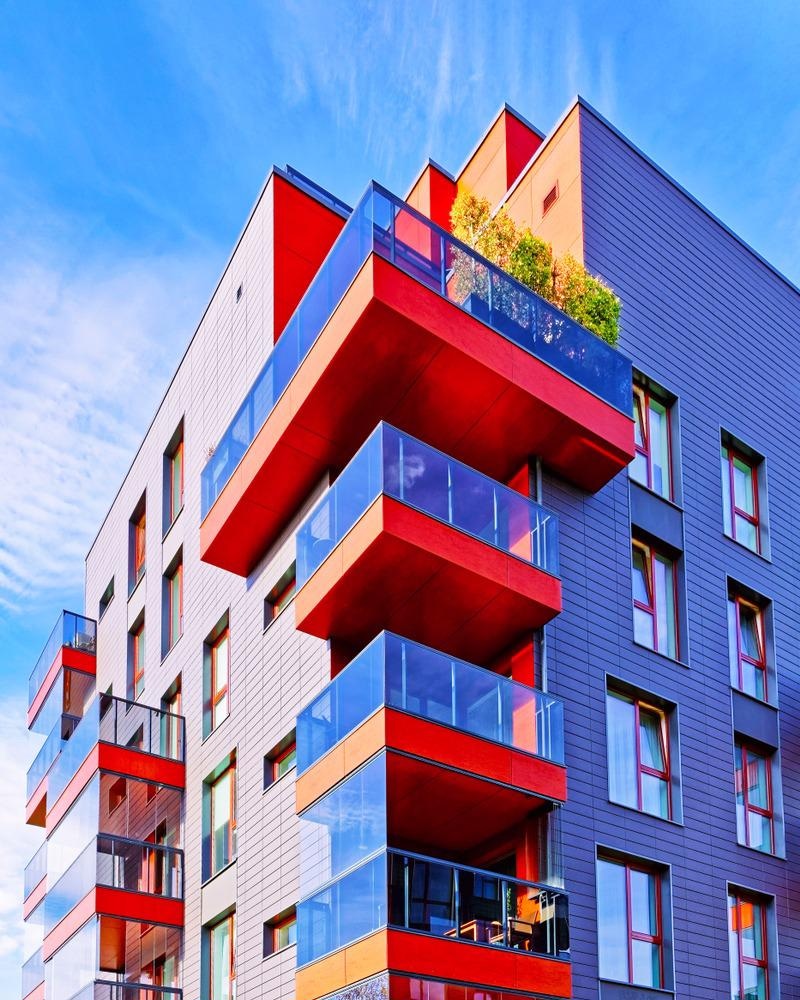Architecture in Development – a media platform for the architecture industry – just announced the six finalists of its 2021 Global Challenge. The community-led building initiatives are pioneering a new approach to architecture, according to the challenge organizers. They bring different skill sets, sociocultural backgrounds, and life experiences to bear on construction, confronting social, humanitarian, and ecological problems holistically.

Image Credit: Roman Babakin/Shutterstock.com
What is Community-Led Building?
Community-led building projects are springing up around the world, challenging conventional architecture and introducing place-based change in places where no professional architecture had ever had an impact.
The majority of human-made structures throughout history were built by their inhabitants and users, without involving architects or construction professionals. These buildings – often referred to as vernacular architecture – rely on skills and resources that are available in the community and affordable by its members. These constraints led vernacular builders to create and mobilize local networks, use local materials, and apply traditional building techniques.
Community-led building projects today build on the vernacular tradition by harnessing the community’s experience and skills, enabling people who live in these communities to connect with their shared heritage and space.
Organizations like Architecture for Humanity (now Open Architecture Collaborative) and Design With the Other 90% Network have been working for a few decades to pioneer community-led and other humanitarian approaches to architecture and construction. The Curry Stone Foundation and Aga Khan Foundation advocate for new social practices in the public arena.
Digital crowdsourcing, funding, and collaboration platforms have flourished in architecture in the last decade or so. This enables even more user-generated content and increases participation from the community. Digital technology also inspires different ways of learning, collaboration, and organizing projects.
Advanced digital construction technologies like Building Information Modelling (BIM) systems and computer-assisted design (CAD) software are now more accessible than ever, with the user experience and user interface lessons of modern web and software development making their way over to the construction industry.
This means that people can more easily engage with the design and conceptualization processes that determine how the built environment in their community will look.
The Architecture in Development Global Challenge
The Global Challenge finalists were selected for individual excellence in community-led building as well as their successful collaborative approaches. They address sustainable development challenges at various scales and contexts, including food, agriculture, climate change, heritage restoration, and affordable housing.
Architecture in Development is partnering with the six finalists in a six-month accelerator program to match them with more collaborators and resources that will help the projects’ meet critical needs. Two of the projects will also receive a small cash prize of €3,000 each.
The finalists were selected from a long list of 56 projects, all published on Architecture in Development’s website. There were 202 submissions to the 2021 Global Challenge prize.
The Finalists
Cocina CoLaboratorio, Mexico
A group of farmers, researchers, chefs, and creatives first met in early 2018 at the border of the dwindling Lacandona Rainforest in Mexico. They set about testing recipes for climate-resilient food systems, and have now drawn up plans to develop a kitchen laboratory alongside agroforestry plots. The meeting space will be used to regenerate local ecosystems and support the cultures that nurture them.
The local community of Moravia, Medellín (infamous as the home of drug cartel boss Pablo Escobar), worked with Berlin, Germany-based architects to create a small-scale prototype community center in 2018. The center hosted over 10,000 visitors in multiple events but is now in need of an upgrade. The new center will combine a cookery school, a recycling fabrication center, artist residencies, and a multi-use roof terrace.
Assam tea plantations are facing an enormous economic crisis, fueled by the economic exploitation of the region’s 1.2 million laborers. A people’s school will serve as a foundation for community action and empowerment, enabling collaboration and trust to meet the region’s challenges in the partnership.
This project will kick start community development in Mongolia’s capital city, Ulaanbaatar. Ger districts in the city lack infrastructure, housing, or any social gathering spaces. The project will create spaces and enable the community to develop them however they see fit.
This house in a district facing rapid gentrification seeks to introduce housing choices to tenements families that previously had none. Three migrant families of garment industry workers – currently organized in a cooperative – will live in the space. The building will be transformed through participatory design to match the families’ needs, creating a shared home that brings stability and enjoyment to all its inhabitants.
The library project will work with children from marginalized communities, creating a safe space for them to access books and other services. Children are encouraged to participate in a range of activities that will widen their horizons for life and employment outside of the classroom. Located in Bengaluru’s IT hub, the project seeks to address issues of urban dualism and starkly visible wealth inequalities in the area.
Haadibadi | Haadibadi Library and Learning Centre
Video Credit: Haadibadi/Youtube.com
References and Further Reading
Hernández, D. (2021). Meet the 6 Finalists of the Architecture-in-Development Global Challenge 2021. ArchDaily. Available at: https://www.archdaily.com/969701/meet-the-6-finalists-of-the-architecture-in-development-global-challenge-2021.
Projects. Architecture in Development. Available at: https://architectureindevelopment.org/projects.
Why the new Do-It-Together architecture has radical potential. (2021) Architecture in Development. Available at: https://architectureindevelopment.org/news/157?utm_medium=website&utm_source=archdaily.com.
Disclaimer: The views expressed here are those of the author expressed in their private capacity and do not necessarily represent the views of AZoM.com Limited T/A AZoNetwork the owner and operator of this website. This disclaimer forms part of the Terms and conditions of use of this website.